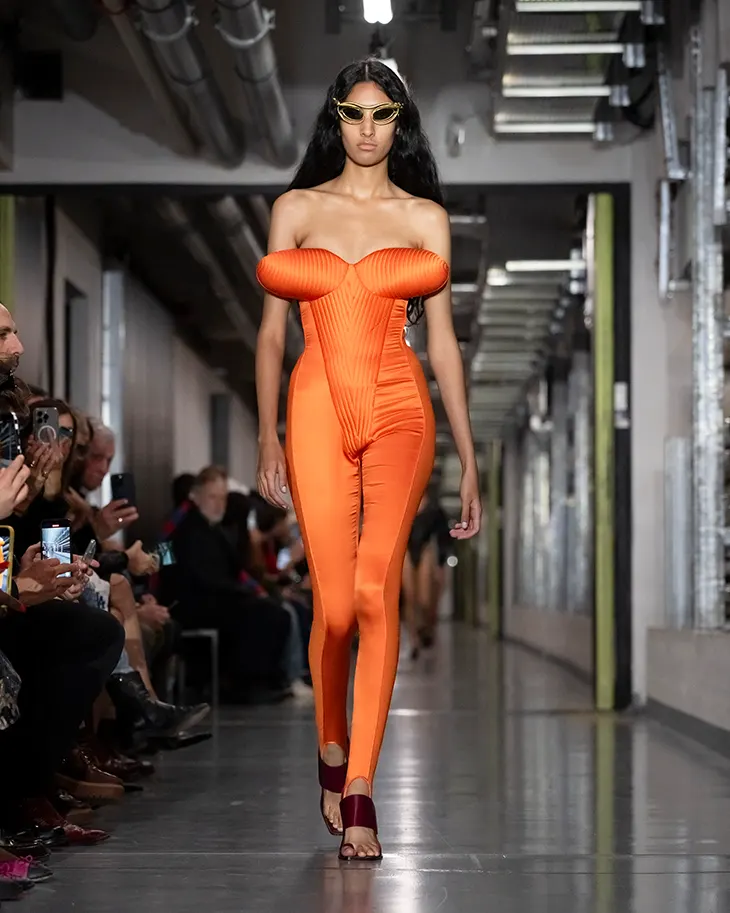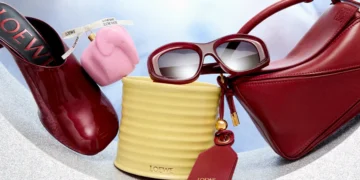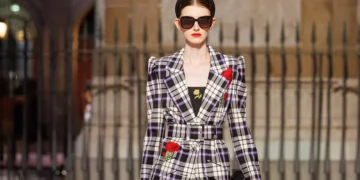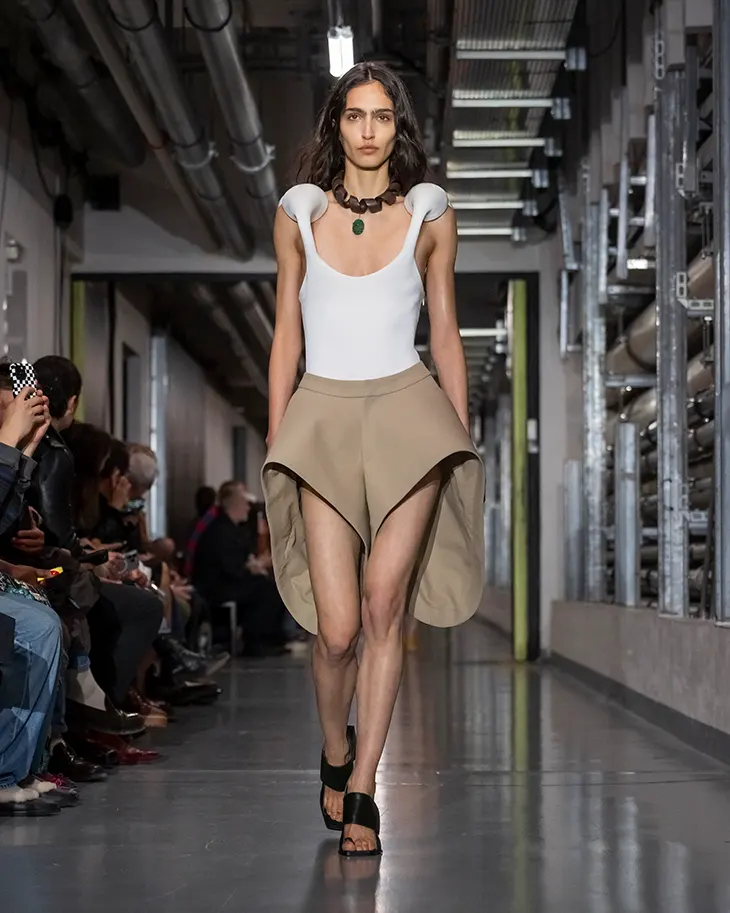
Duran Lantink introduced his first collection for Jean Paul Gaultier ready-to-wear under the title Junior. The name recalled the cult Junior Gaultier line that ran from 1988 to 1994, known for its rowdy youth culture and club identity. That era first drew Lantink toward the house, and it continues to shape his view of fashion as a space of freedom. For Spring Summer 2026, he turned to instinct, creating a collection that felt fun, energetic, modern, and alive.
Lantink described his method as months of “Duranification.” He developed, fitted, twisted, and played with pieces, letting some remain while others disappeared. This process gave the collection spontaneity and urgency. The foundation drew from Jean Paul Gaultier’s codes, yet pushed them into new territory. Marinière stripes warped into optical illusions. Dysmorphic constructions sent skirts outward and made shoulders collapse. The iconic tattoo-on-mesh inflated into three-dimensional forms. Glittering trompe l’oeil pieces depicted anatomy across torsos. Burgundy, mustard yellow, sky blue, and grey built the palette, accented with dazzling jewelry. The result connected with the Gaultier archive but moved forward with Lantink’s signature volumes and disruptive silhouettes, familiar to audiences from his five acclaimed Paris shows.
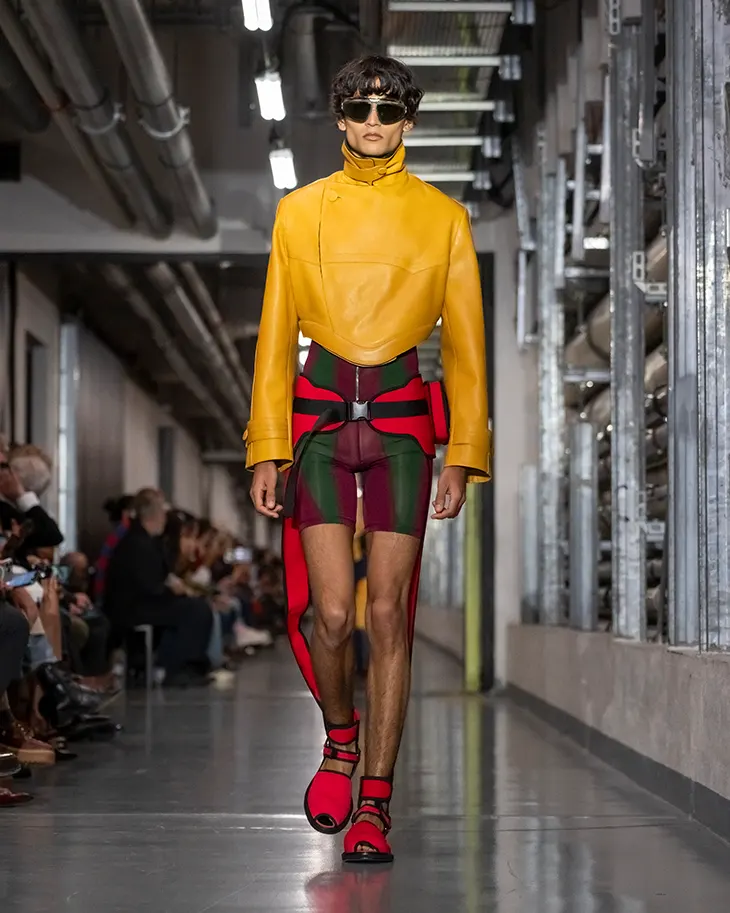
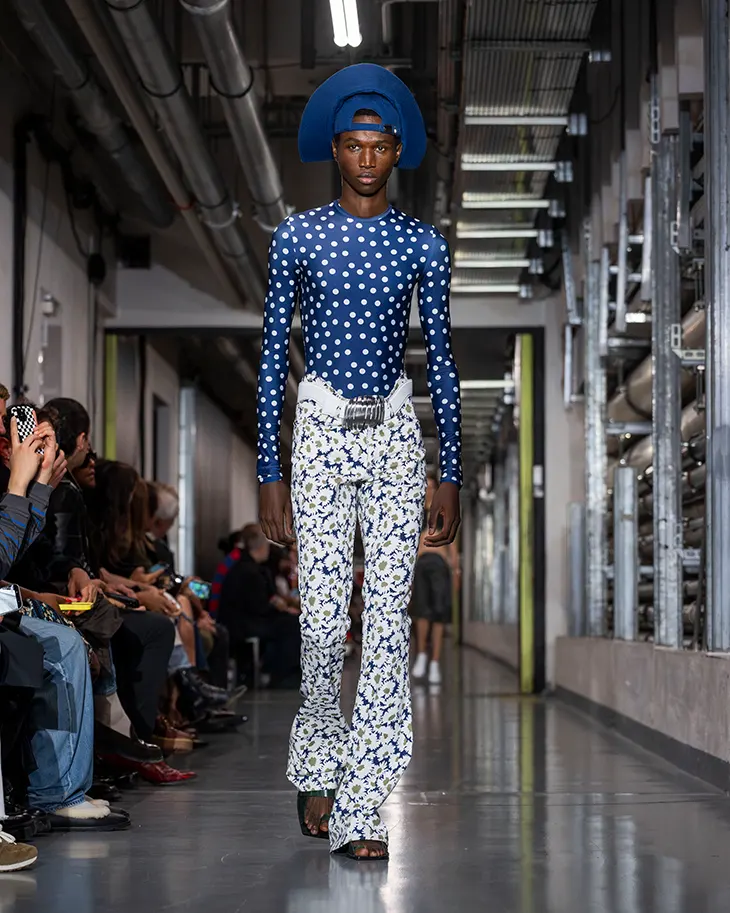
While Lantink avoids moodboards, one book guided his imagination: Het RoXY Archief, 1988–1999 by Dutch photographer Cleo Campert. It chronicled Amsterdam’s legendary RoXY club, a space of hedonism, anarchy, and careless style. Jean Paul Gaultier himself once frequented the venue. Lantink, too young to experience it firsthand, absorbed its myth after it burned down, and its aura shaped the spirit of Junior. The designer also paid tribute to John Giorno, the American poet, activist, and artist whose hypnotic recordings often serve as his studio soundtrack. Giorno’s experimental Dial-a-Poem project and his lasting influence filtered into the collection’s sound design.
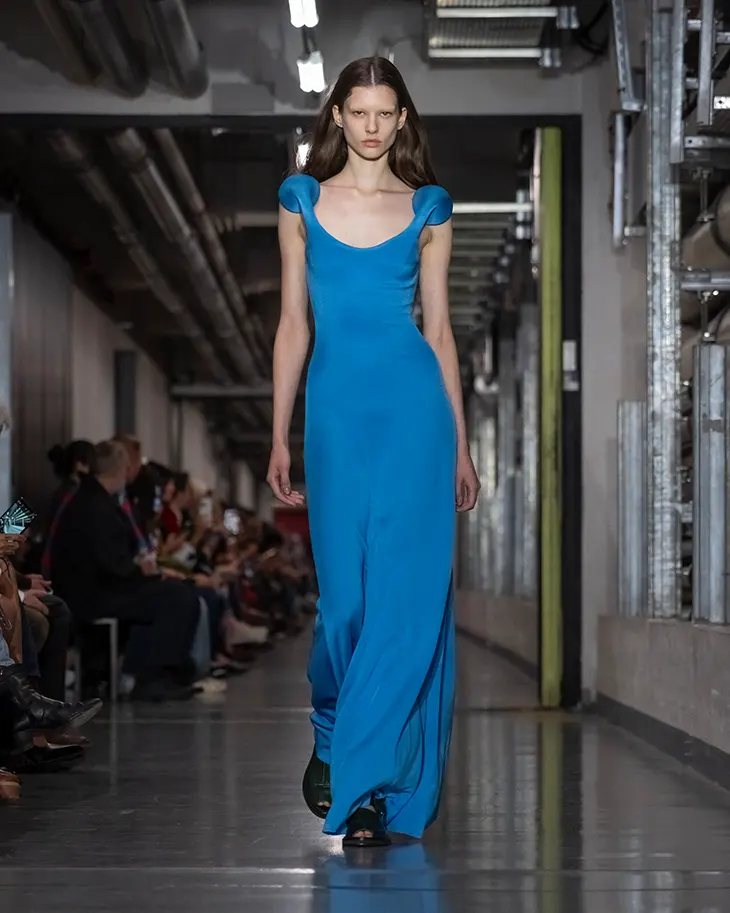
The show took place in the basement of Musée du Quai Branly, the Paris museum dedicated to global cultures. The location added a sense of history nearby, if not always visible, creating what Lantink likened to a trace of Jean Paul Gaultier’s fragrance Le Male left on a pillow, an evocative reminder of what has passed, still lingering in the present. This atmosphere deepened the mood of the collection, linking memory and immediacy.
Lantink marked a new era for Jean Paul Gaultier ready-to-wear. The collection carried the essence of the house while infusing it with his personal language of distortion, volume, and surprise. It referenced history without freezing it, and it invited the audience into a fresh conversation about fashion’s capacity for freedom.
